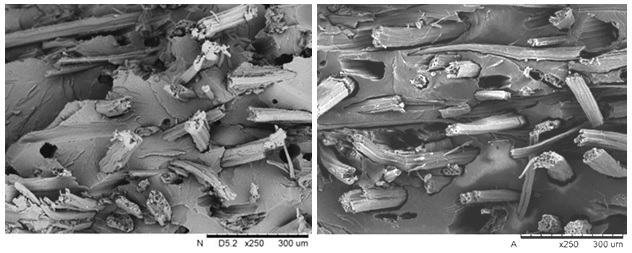Biocomposites
A biocomposite is a material formed by a matrix (resin) and a reinforcement of natural fibers (usually derived from plants or cellulose). With wide-ranging uses from environment-friendly biodegradable composites to biomedical composites for drug/gene delivery, tissue engineering applications and cosmetic orthodontics. They often mimic the structures of the living materials involved in the process in addition to the strengthening properties of the matrix that was used but still providing biocompatibility, e.g. in creating scaffolds in bone tissue engineering. Those markets are significantly rising, mainly because of the increase in oil price, and recycling and environment necessities.
- Biocomposites are characterised by the fact that:
the petrochemical resin is replaced by a vegetable or animal resin, and/or
the bolsters (fiberglass, carbon fibre or talc) are replaced by natural fibre (wood fibres, hemp, flax, sisal, jute...)
In biomaterials, it is important that each constituent of the composite be biocompatible. Moreover, the interface between constituents should not be degraded by the body environment. Normally, Bio-composite material can be classify in to three groups
- Particulate Composites
- Fibrous Composites
- Porous Materials

Fracture surface of rice husk/PP composites

FESEM micrographs taken from the fractured surface of PMMA/5HA composites
